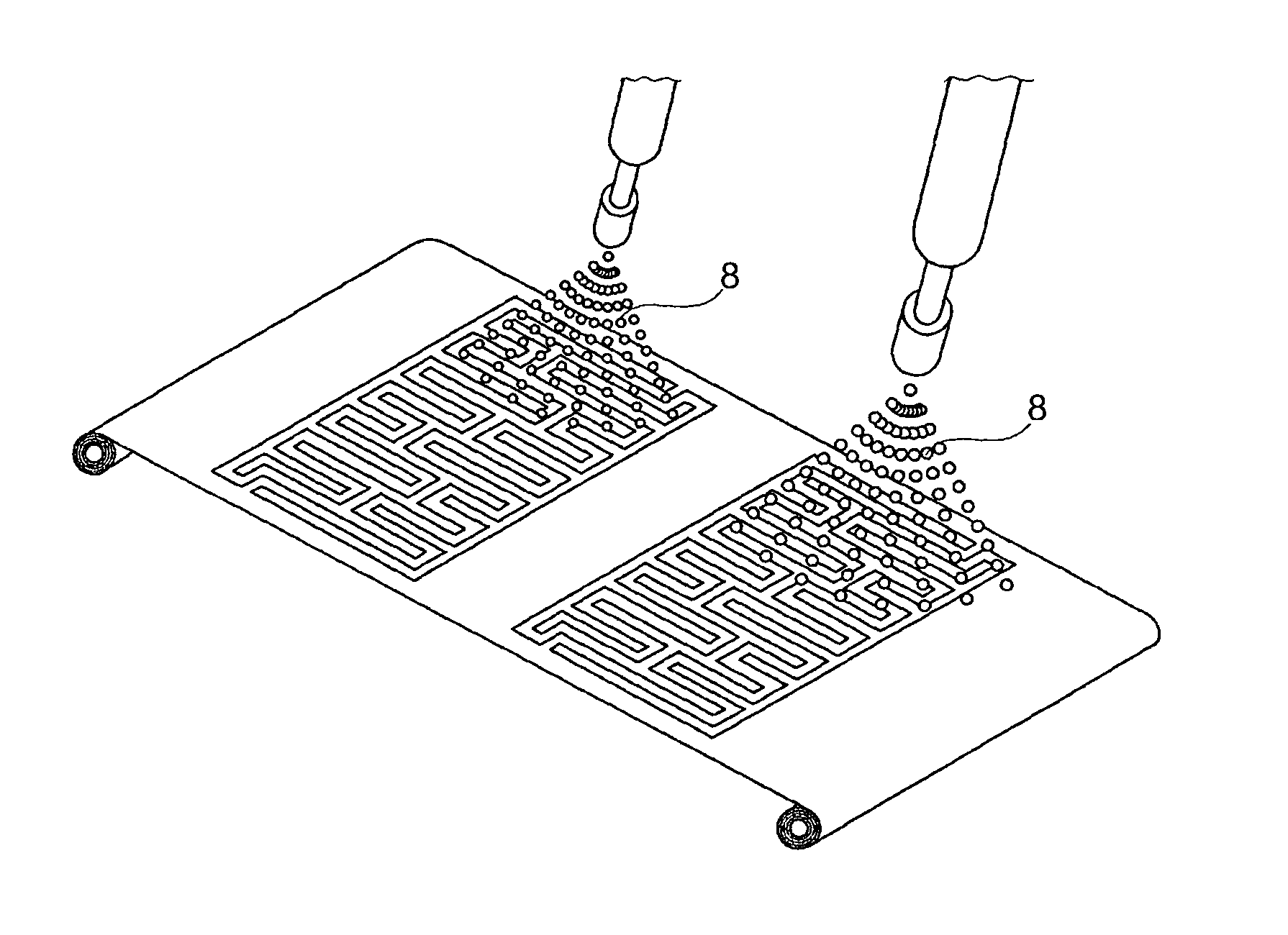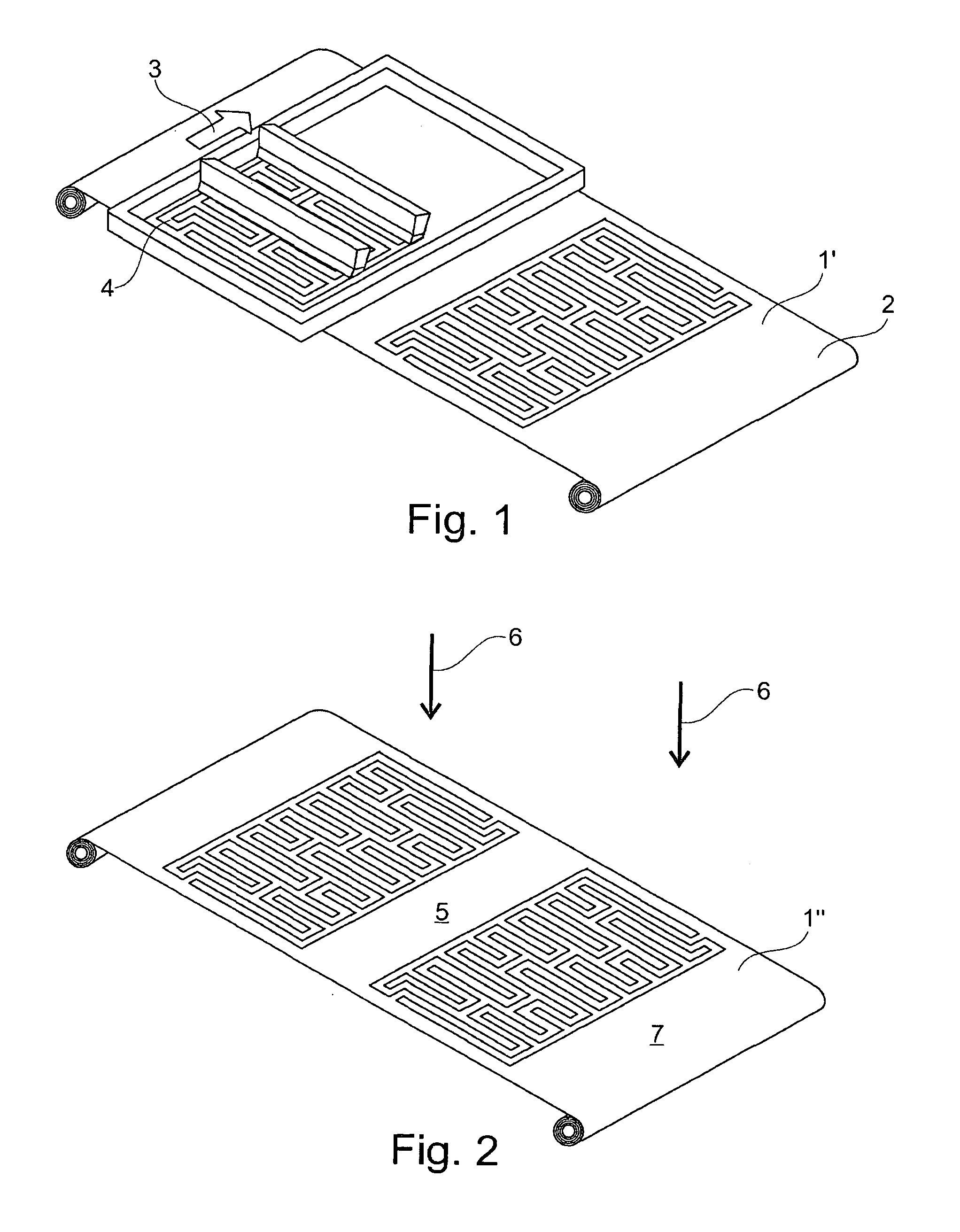Fabric, a device with fabric and a manufacturing method for fabric
- Summary
- Abstract
- Description
- Claims
- Application Information
AI Technical Summary
Benefits of technology
Problems solved by technology
Method used
Image
Examples
Embodiment Construction
[0051]In the figures the same elements, and elements with the same function, are identified the same reference symbols.
[0052]In FIG. 1 is shown a method step of a possible manufacturing method for the manufacture of a partially metallically coated fabric 1 shown in FIG. 4 above.
[0053]In the method an uncoated fabric 1′ is firstly provided as a fabric web. This uncoated fabric 1′ comprises, preferably consists of, threads 2 (weft threads and warp threads), which at least on their outer surface are formed from a polymer material (plastic).
[0054]FIG. 1 schematically represents the application (here by squeegee) of a mask 4, i.e. a masking material, in a printing direction 3 running transverse to the longitudinal extent of the fabric web, here by means of a screen printing method (alternatively, for example, by an ink jet printing method) in regions, which in the finished, partially coated fabric 1 (cf. FIG. 4) are not coated, or at least are not metallically coated.
[0055]In a method st...
PUM
| Property | Measurement | Unit |
|---|---|---|
| Thickness | aaaaa | aaaaa |
| Thickness | aaaaa | aaaaa |
| Thickness | aaaaa | aaaaa |
Abstract
Description
Claims
Application Information
 Login to View More
Login to View More - R&D
- Intellectual Property
- Life Sciences
- Materials
- Tech Scout
- Unparalleled Data Quality
- Higher Quality Content
- 60% Fewer Hallucinations
Browse by: Latest US Patents, China's latest patents, Technical Efficacy Thesaurus, Application Domain, Technology Topic, Popular Technical Reports.
© 2025 PatSnap. All rights reserved.Legal|Privacy policy|Modern Slavery Act Transparency Statement|Sitemap|About US| Contact US: help@patsnap.com



